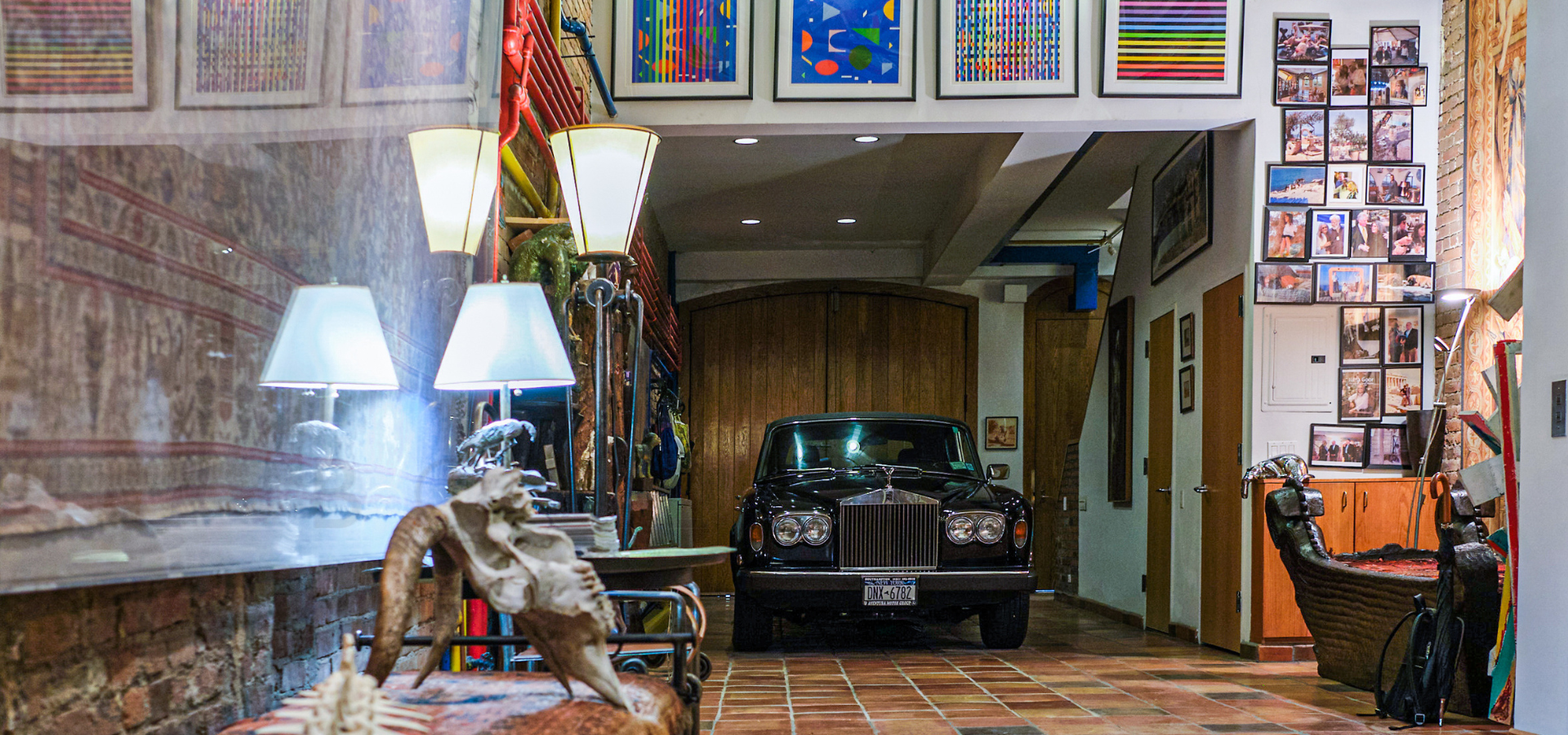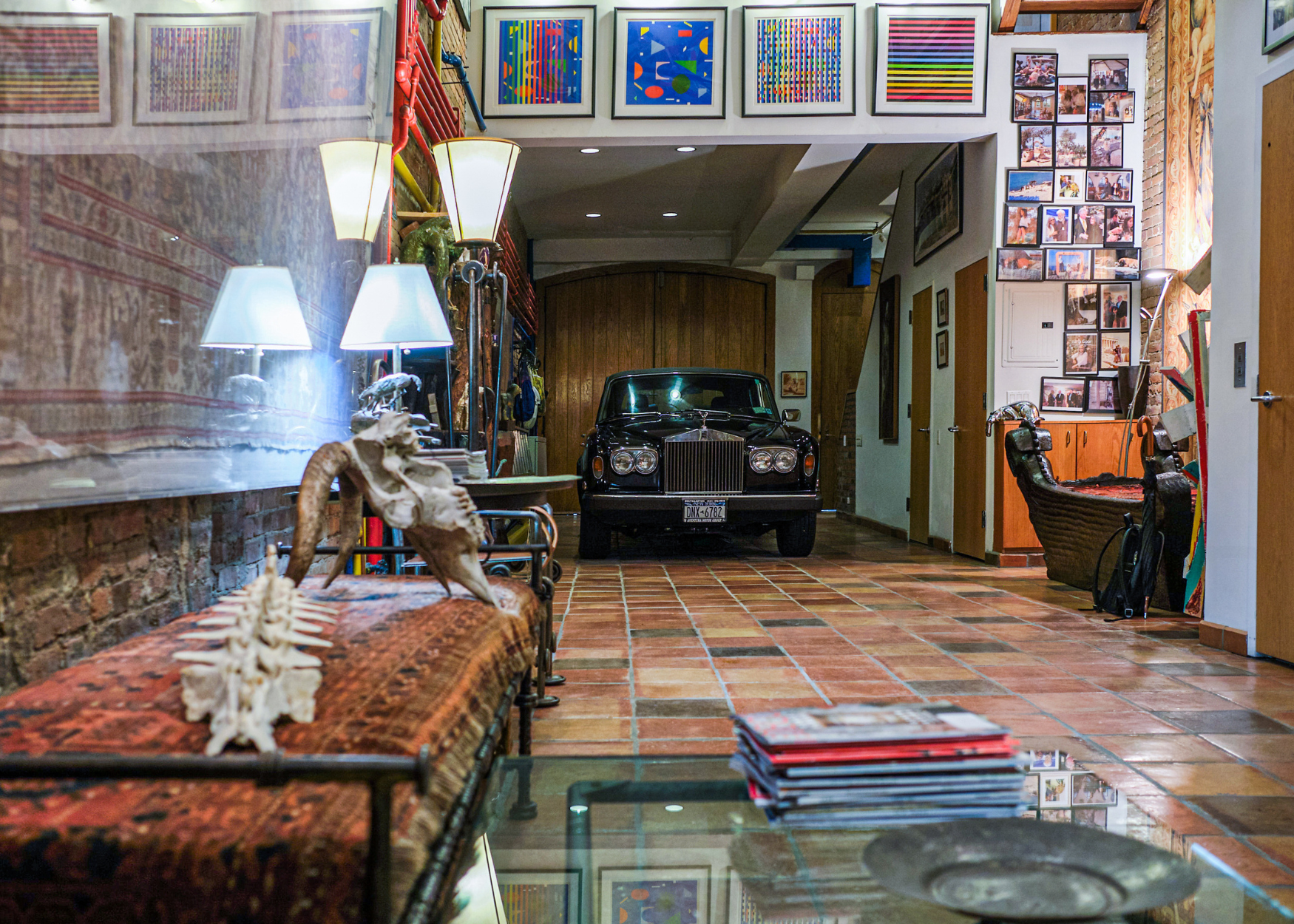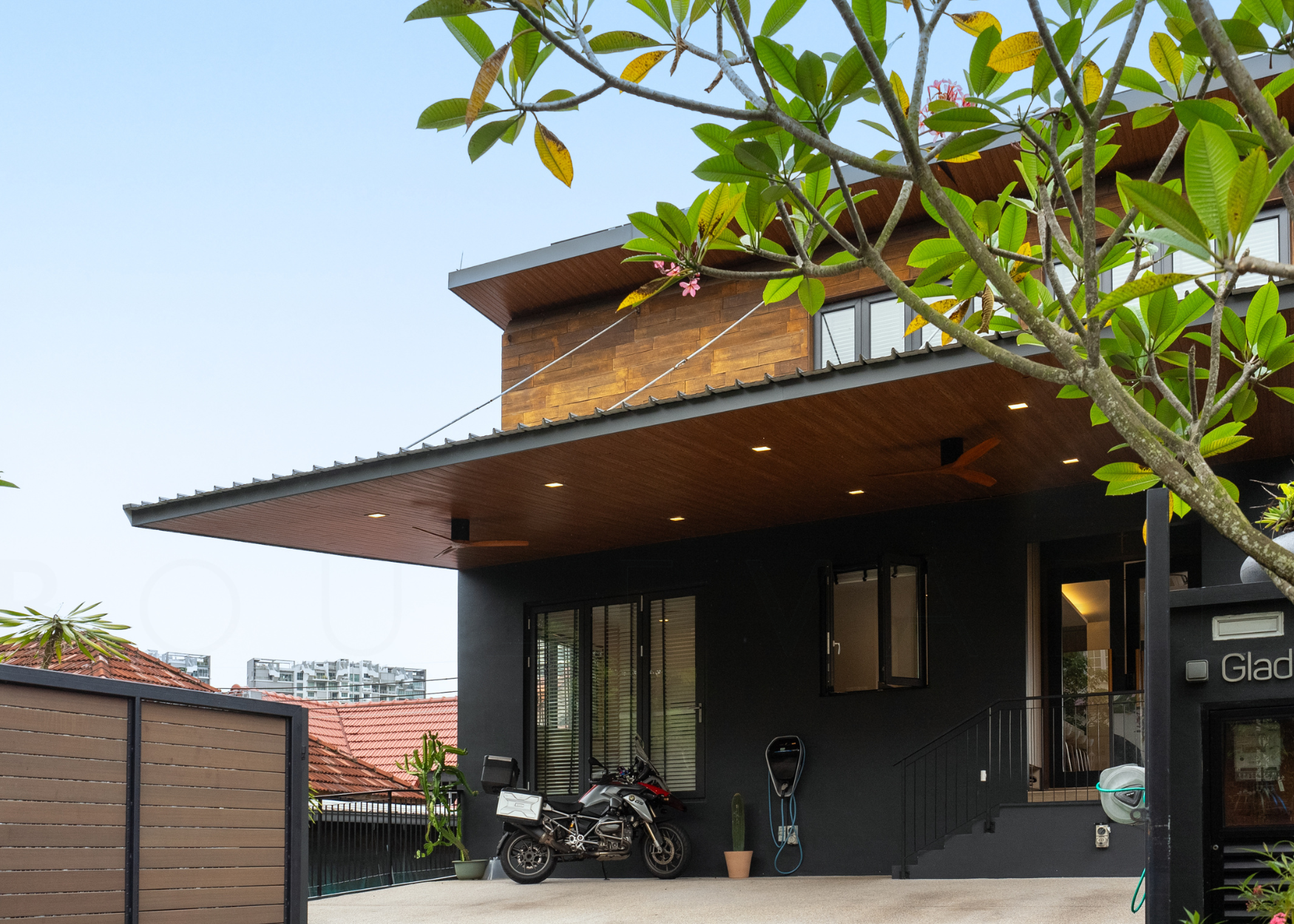The Interview: Beka Baduashvili on the Upper East Side’s enduring appeal and New York’s rare carriage houses—178 East 75th
by Hamish McDougall
Few neighbourhoods in New York hold on to their history as visibly and as naturally as the Upper East Side. Set along one of its most historic blocks, the 178 East 75th stands as a rare jewel—one of just 75 remaining carriage houses in the city.
Originally built in the early 1900s, the home has been thoughtfully reimagined across six spacious levels and retains much of its historic architecture—now paired with modern interiors designed for contemporary living.
Soaring ceilings, exposed brick, hardwood floors and multiple skylights create a sense of light and volume, while a striking curation of art by Israeli artist Ilana Goor and her husband Leonard Lowengrub brings a museum-like richness to the space.
In conversation with Boulevard, Beka Baduashvili talks through what makes this home—and this pocket of the Upper East Side—so compelling. From the proximity to Central Park to the architectural details buyers still seek out, Baduashvili shares insights into a part of Manhattan where every block has a story, and every townhouse offers a chance to write the next chapter.
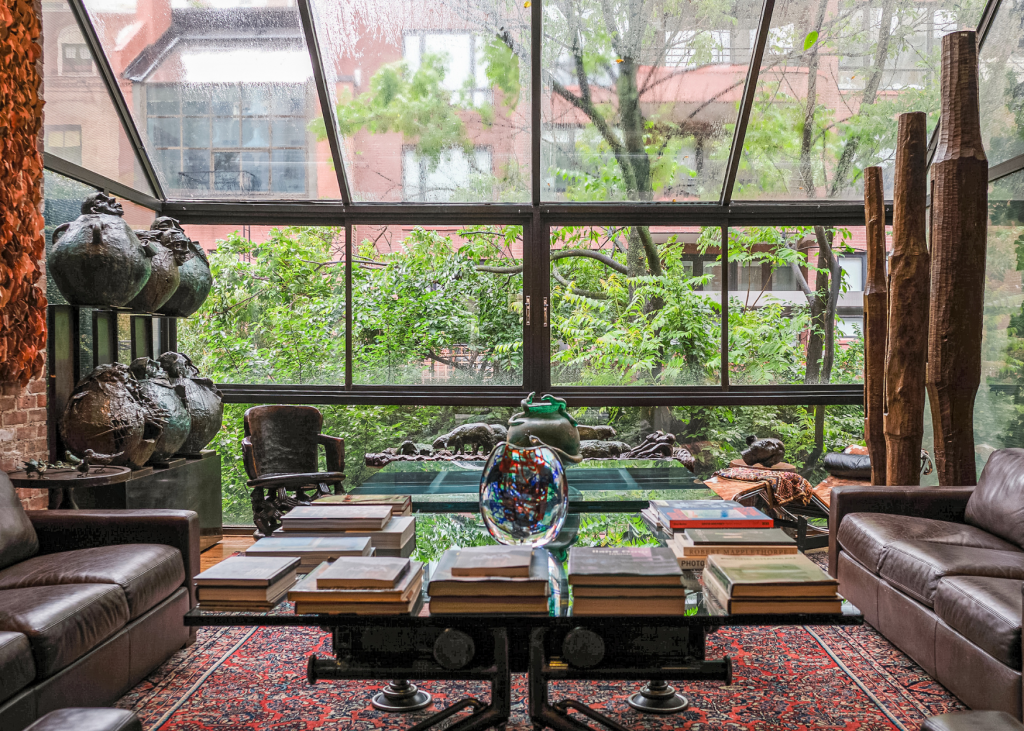
178 Easth 75th Street’s solarium-style living room. Top: Three-car drive-in garage with Rolls-Royce car included in the sale.
Boulevard: What is it about this property—178 East 75th—that makes it so unique and desirable?
Beka Baduashvili: It’s almost like two different sites—there’s a kind of barrier between West of Lexington and East of Lexington because of the proximity to the park. Central Park is obviously the jewel of the city, so the closer you can get to it, the more desirable it becomes. This is where you see more of that charm—the old twentieth-century townhouses, the Gilded Age townhouses. That’s where you get the real beauty from a bird’s-eye view. Every single block has its own history, and every townhouse has a story—who built it, who lived in it. It’s the who’s who of turn-of-the-century New Yorkers. You definitely want to be part of that.
But the Upper East Side has always been that stronghold too. When people experience the Upper East Side—especially the younger generation—they begin to truly appreciate what’s here. Most people tend to start downtown, because that’s where the Village is, where the scene is. It’s often seen as the cultural heart, where the artists live and everything begins. But surprisingly, you’ll find a lot of that same energy on the Upper East Side too. Many people don’t realise it, but there’s so much character here. It’s an exciting place.
Blvd: So, would you say you’re a specialist in this kind of property and this part of the city?
Baduashvili: Not exactly. But I know most of it—I’ve lived in these neighborhoods. So I know a lot about the streets, the makeup of the avenues—the Eighties, Seventies, Sixties—some of the smaller streets as well. I understand the differences and what each area brings.
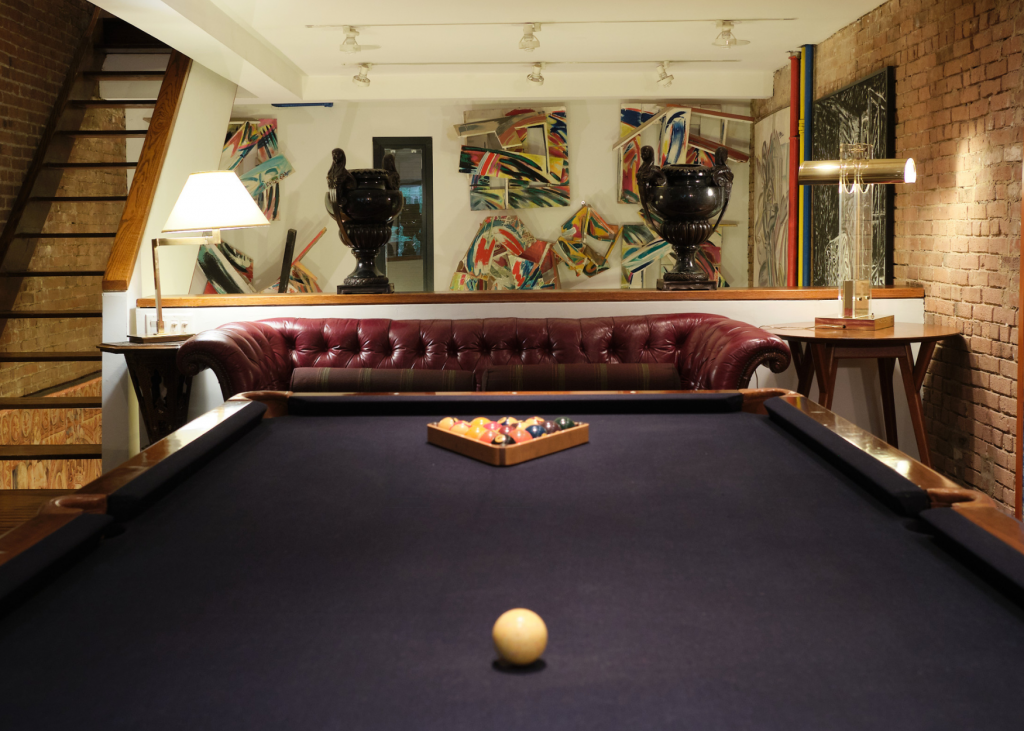
Billiards room adorned with stunning artworks curated and created by Ilana Goor and Leonard Lowengrub.
Blvd: What’s the typical types of property in this part of the market? And what tends to come on to the market—in terms of condition?
Baduashvili: It depends on who’s doing the renovation. You don’t see a lot of drastic transformations of these townhomes once they’re in a landmarked block. Yes, there are plenty of upgrades—it’s modern living, and people want contemporary comforts, especially in the layout and infrastructure of the building. But many architects and buyers truly appreciate the details—the moulding, the exposed brick walls.
That’s always my advice to anyone buying what we call the “shell”. Try to preserve as much of the original character as possible.
For example, keep the original front door—like this property did. That’s part of the appeal. Then bring in luxury finishes and modern touches inside. It’s about finding the right mix of both.
There are, of course, a few cases where people completely transform the space into something very modern or futuristic. But still, I don’t like to downplay people’s taste—it really depends on the individual vision.
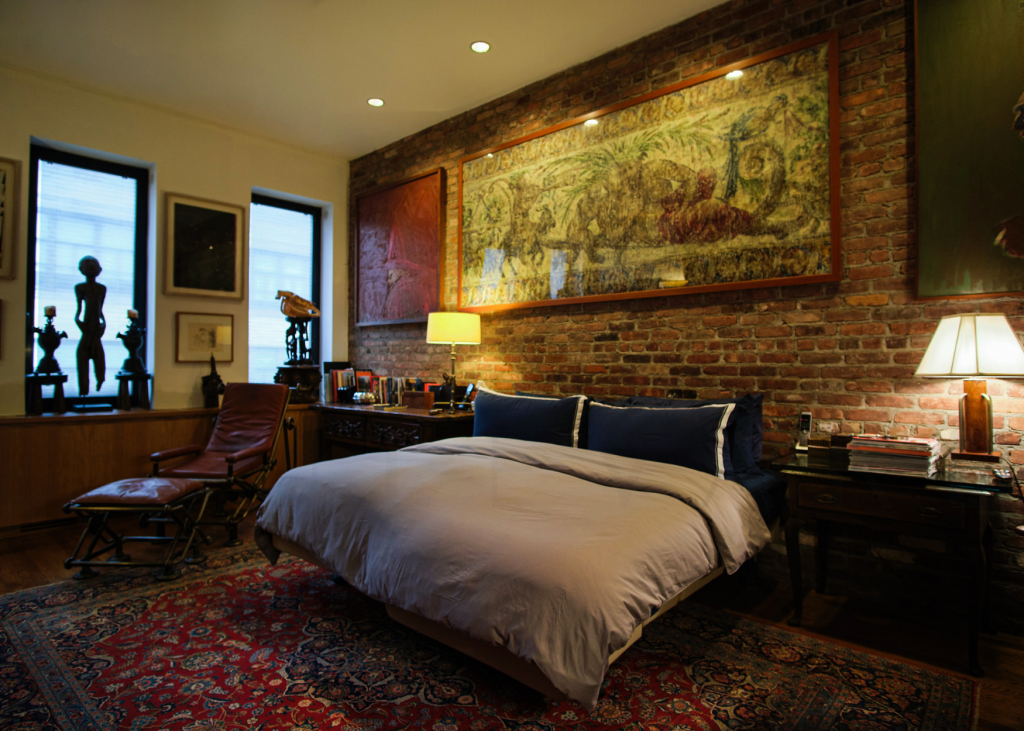
Most townhouses follow a similar layout. When you walk in, you usually enter the main living or entertaining room. The kitchen is typically at the back, often overlooking a garden if the home has one—which most do. Then you have the upper floors, depending on the square footage. Usually, the first floor is for living and entertaining. You walk up the steps, and there’s a foyer, living room, kitchen, and garden. The upper floors are typically where the bedrooms are.
I’ll say this—people really look into townhouses for the flexibility of having multiple bedrooms. If you look at condos and co-ops in New York City, they rarely go beyond five bedrooms. They just don’t have the square footage—unless you combine units. Townhouses offer that kind of luxury—being able to have more than six bedrooms.
This one does have a roof deck, which is a great feature. I’d say that’s a major attraction of townhomes—along with the privacy. There’s no board, no shared common areas, no assessments. You have your own space.
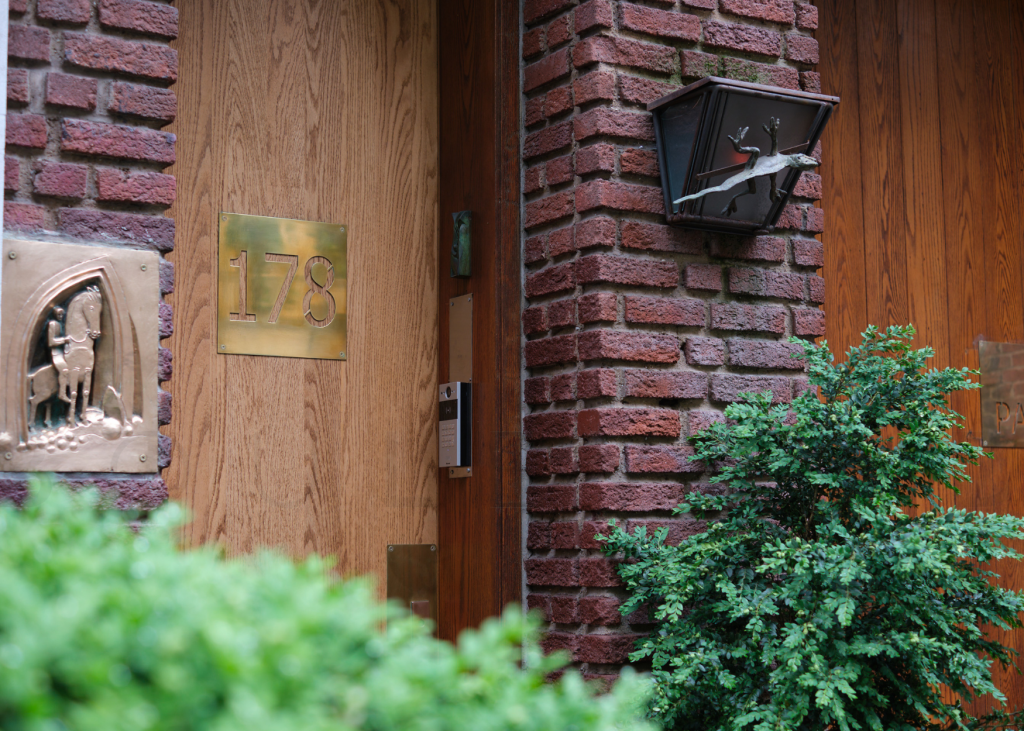
Blvd: For buyers looking at blue-chip assets—especially properties like this one that have been held for years—do you find they prefer fully renovated homes, or is there actually more appeal in those that still need work?
Baduashvili: You’d be surprised—some of these townhomes come to market and haven’t been touched in a century. But that’s actually what certain buyers are looking for. They want the opportunity to make it their own—to renovate in their own way.
For example, I’m about to list two townhomes next to each other—one that needs a lot of work, and one that was just fully renovated. The one that needs work is getting more attention. At that price point, buyers are very savvy. They often have their own teams—contractors, architects—they know exactly who to bring in to make the home truly theirs.
Blvd: There was a dip in the New York market following covid; would you say we’ve moved past that now—and are in the midst of a comeback?
Baduashvili: Yes, this has been going on since 2022. But the comeback has been real. I’m sure you’ve read Jerry’s piece, right? The sentiment still holds—New York is New York. It’s never really “over” for us.
There’s always a comeback—and when it does happen, it comes back strong. We had one of the highest rates of signed contracts at the start of the year, from 2023 to 2024.
Even with the rate hikes—it did have an effect—but not as much as people expected. It didn’t really create a major dent, even among first-time buyers.
Read next:
